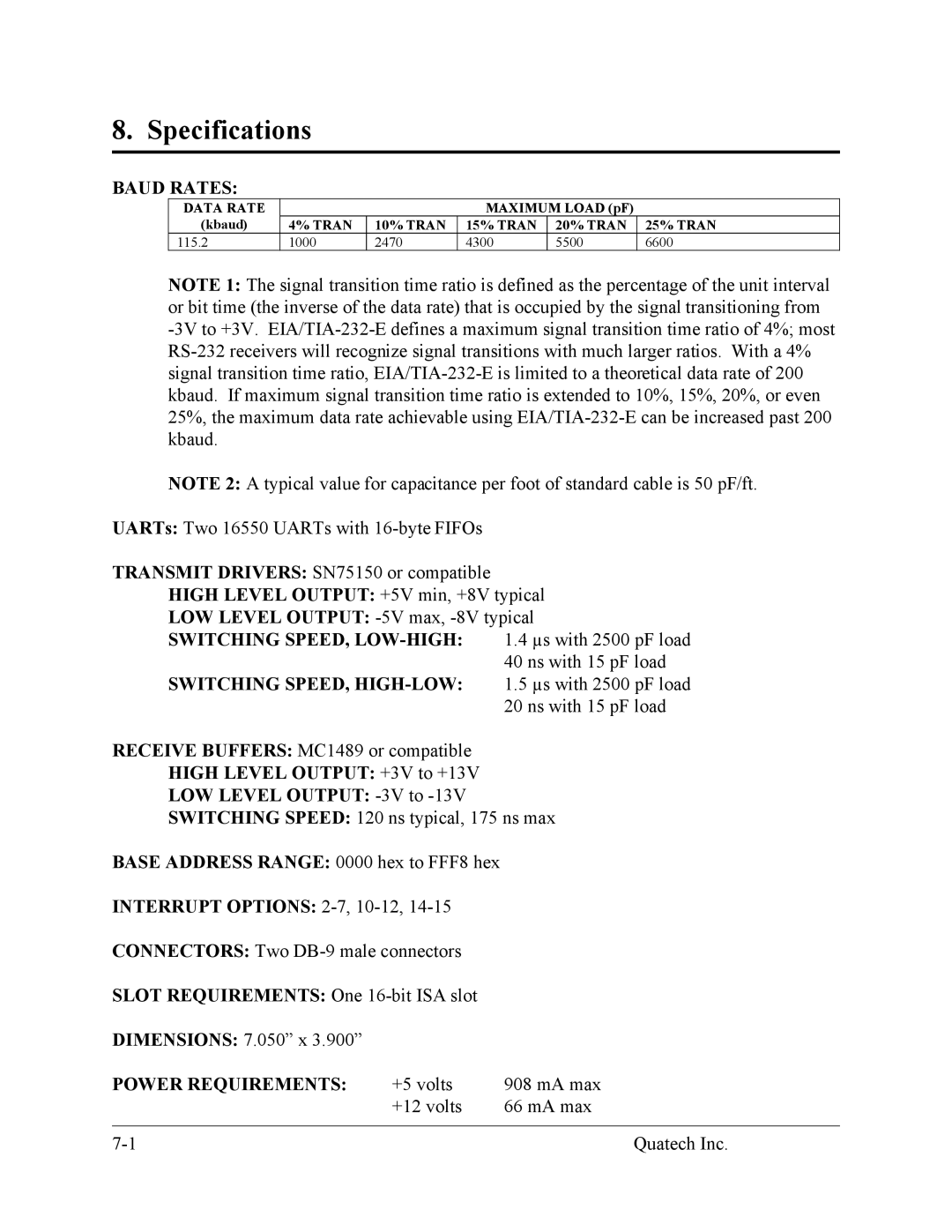8. Specifications
BAUD RATES:
DATA RATE |
|
| MAXIMUM LOAD (pF) |
| |
(kbaud) | 4% TRAN | 10% TRAN | 15% TRAN | 20% TRAN | 25% TRAN |
115.2 | 1000 | 2470 | 4300 | 5500 | 6600 |
NOTE 1: The signal transition time ratio is defined as the percentage of the unit interval or bit time (the inverse of the data rate) that is occupied by the signal transitioning from
NOTE 2: A typical value for capacitance per foot of standard cable is 50 pF/ft.
UARTs: Two 16550 UARTs with
TRANSMIT DRIVERS: SN75150 or compatible
HIGH LEVEL OUTPUT: +5V min, +8V typical
LOW LEVEL OUTPUT:
SWITCHING SPEED, | 1.4 µs with 2500 pF load |
SWITCHING SPEED, | 40 ns with 15 pF load |
1.5 µs with 2500 pF load | |
| 20 ns with 15 pF load |
RECEIVE BUFFERS: MC1489 or compatible
HIGH LEVEL OUTPUT: +3V to +13V
LOW LEVEL OUTPUT:
SWITCHING SPEED: 120 ns typical, 175 ns max
BASE ADDRESS RANGE: 0000 hex to FFF8 hex
INTERRUPT OPTIONS:
CONNECTORS: Two
SLOT REQUIREMENTS: One
DIMENSIONS: 7.050” x 3.900” |
|
|
POWER REQUIREMENTS: | +5 volts | 908 mA max |
| +12 volts | 66 mA max |
|
|
|
| Quatech Inc. |
